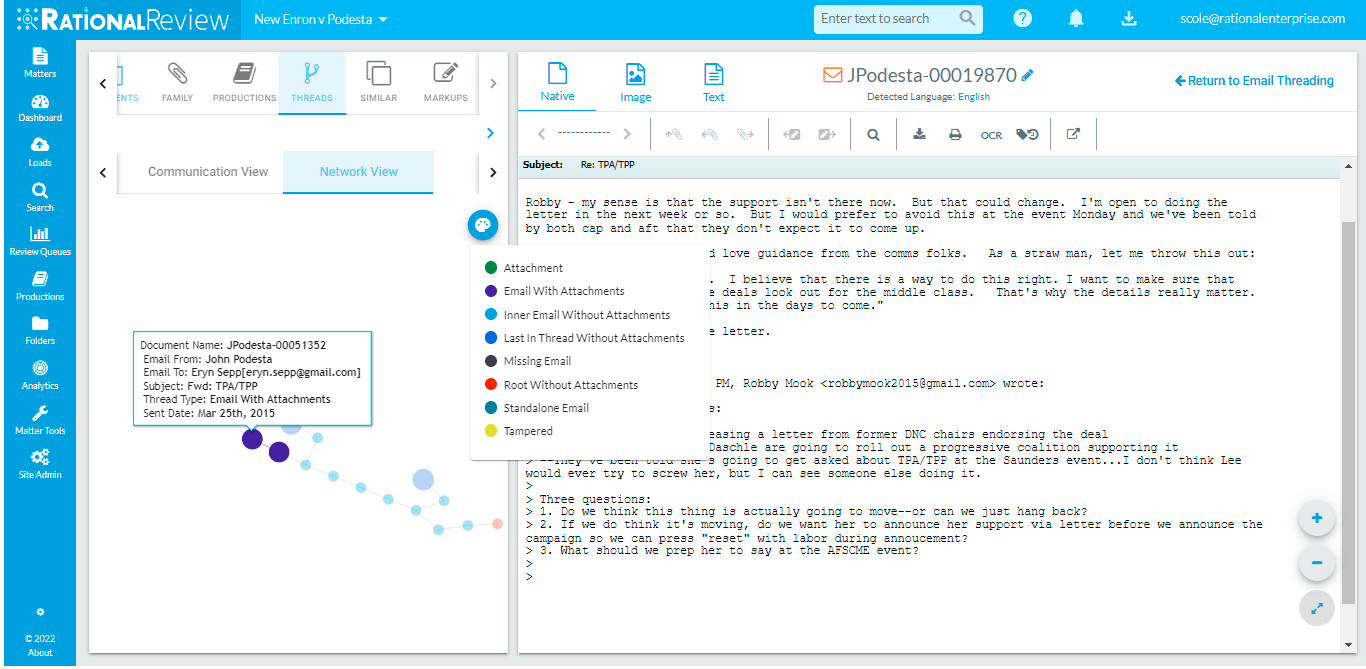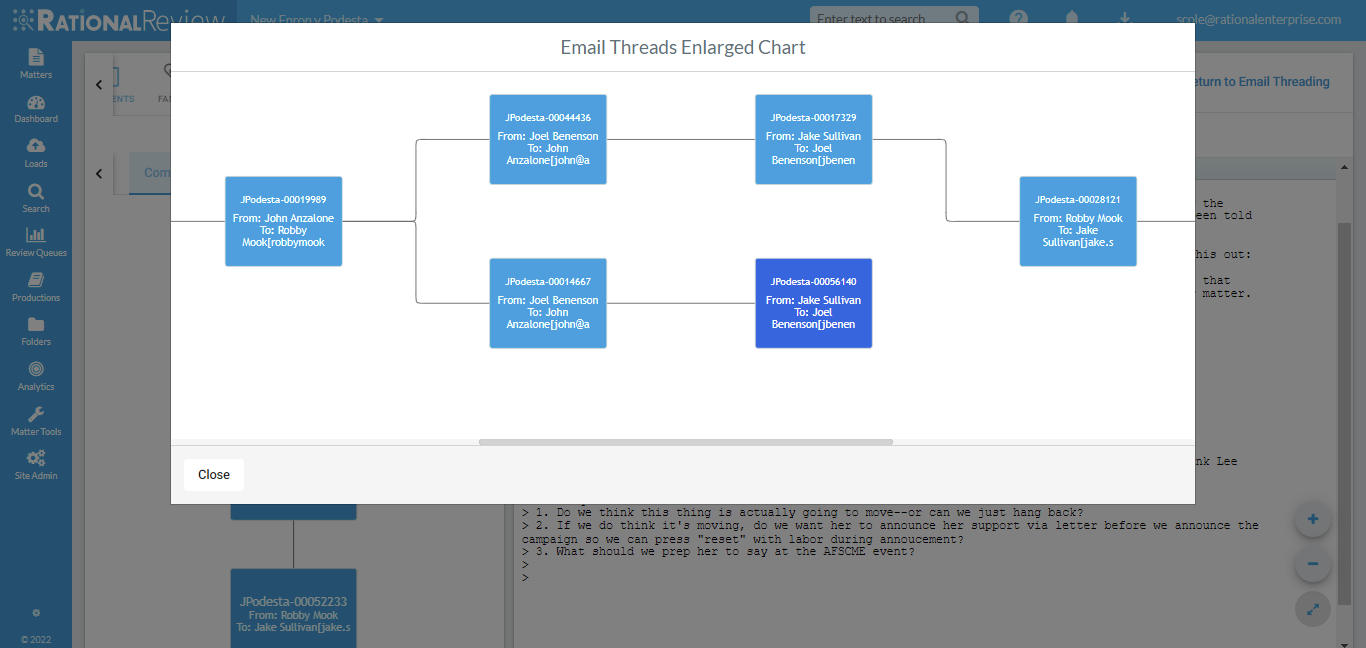What if we told you there is a way to increase the speed and accuracy of your next document review without the need of an expert and without incurring additional cost? The concept of email threading is likely a familiar one, as eDiscovery providers have been touting this email organizational approach and related technologies for over ten years now (time flies, doesn’t it?). Despite the value and the test of time, email threading is still underutilized by many eDiscovery consumers. In this blog, we will revisit email thread analysis to remind eDiscovery users how email thread analysis can be helpful in any project involving email.
Defining Email Threading Analysis
Email threading refers to the logical grouping of all email replies, forwards, and drafts that can be traced to the same root email. In discovery, this capability can be used to enhance document review and amplify document analysis. In addition to grouping documents stemming from the same root email, email thread analysis classifies emails within an email group based on the presence of unique content, most typically found in the last emails of a chain and in emails containing attachments. This grouping allows end users to reduce the review of redundant content, focusing in only on “inclusive emails” that are not wholly contained within the body of another email, increasing both review speed and consistency.
Recent Email Threading Rulings
Email threading was center stage in a recent Southern District of New York matter. New York Magistrate Judge Stewart Aaron ordered the production of non-inclusive emails in a matter where only inclusive emails were produced (In re Actos End Payor Antitrust Litig., No. 13–CV–9244 (RA) (S.D.N.Y. March 30, 2022)). Judge Aaron noted the “exclusion of lesser included emails from production has resulted in the exclusion of the metadata associated with earlier emails in a chain,” elaborating that the exclusion of the non-inclusive email metadata made these earlier emails harder to search for, and noting that the discovery agreement failed to stipulate the production of inclusive emails only.
While this matter may be a cautionary tale in the importance of detailing your intended email threading protocol in your discovery agreement, it should not detract from the value email threading brings to a matter.
How to Add Value with Email Threading
- Reduce Review Time Spent on Redundant Content: Despite the recent SDNY ruling, email threading can still be a helpful tool to reduce the review of duplicative content. Grouping emails by thread for review can allow a document reviewer to effectively focus their review on the inclusive emails (those with unique content) within a thread and use tools like email thread visualizations to help propagate coding to lesser emails/redundant content contained within the thread.
- Increase Review Speed: Sorting email threads together for review by the same individual can increase the speed of review by up to 30% without removing or propagating coding to a single lesser inclusive email from the review queue. When the same thread is reviewed by a single document reviewer, the reviewer becomes familiar with the email conversation and can move through the conversation more efficiently than several individual reviews seeing various emails from the thread separately.
- Increase Review Consistency: Sorting by email thread also leads to increased review consistency. One reviewer looking at the same email thread from beginning to end can code emails with the benefit of context, whereas several different reviewers looking at several different emails within a thread are less likely to make consistent coding determinations.
- Navigate Seamlessly Through Complex Email Chains: Interactive email visualization tools like those pictured below from Rational Review allow reviewers to seamlessly navigate through an email thread to drill down on emails of interest and propagate coding to lesser inclusive emails.

Email Threading in Rational Review

Email Threading Chart in Rational Review
- Enhance Search Capability: Email threading is also a valuable search enhancement tool. When investigating or searching data, expanding search results to include all documents within an email thread where any member of that email thread is part of the search results might add valuable context to your investigation. For instance, if an attachment to an email references the important code name for a project, reviewing the full context of the email chain discussing the attachment may add value to the exploration of this project.
- Enhance QC Capability: Email threading is also an important tool to enhance quality control workflows, especially relating to privilege. If one email in a chain is privileged, it’s more likely that other emails in that thread may also be privileged, or at the very least, require the redaction of any email withheld for privilege from the body text of any later in thread email. Review managers and QC teams can spot check outgoing productions using email thread groupings containing an email or attachment withheld for privilege to ensure any members of an email thread containing a privileged document has been properly coded or redacted to prevent the inadvertent production of privileged material.
An Old Friend
There are few tools in our eDiscovery toolkit that can increase review speed, increase review accuracy, enhance search results, enhance quality control, and help prevent the production of privileged materials, but email thread analysis continues to offer all users all these benefits and more. If an investigation or discovery involves emails, don’t underestimate the value that our old friend email threading can still provide to your matter.

